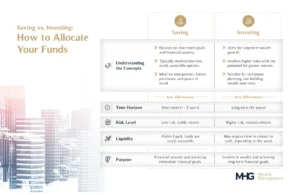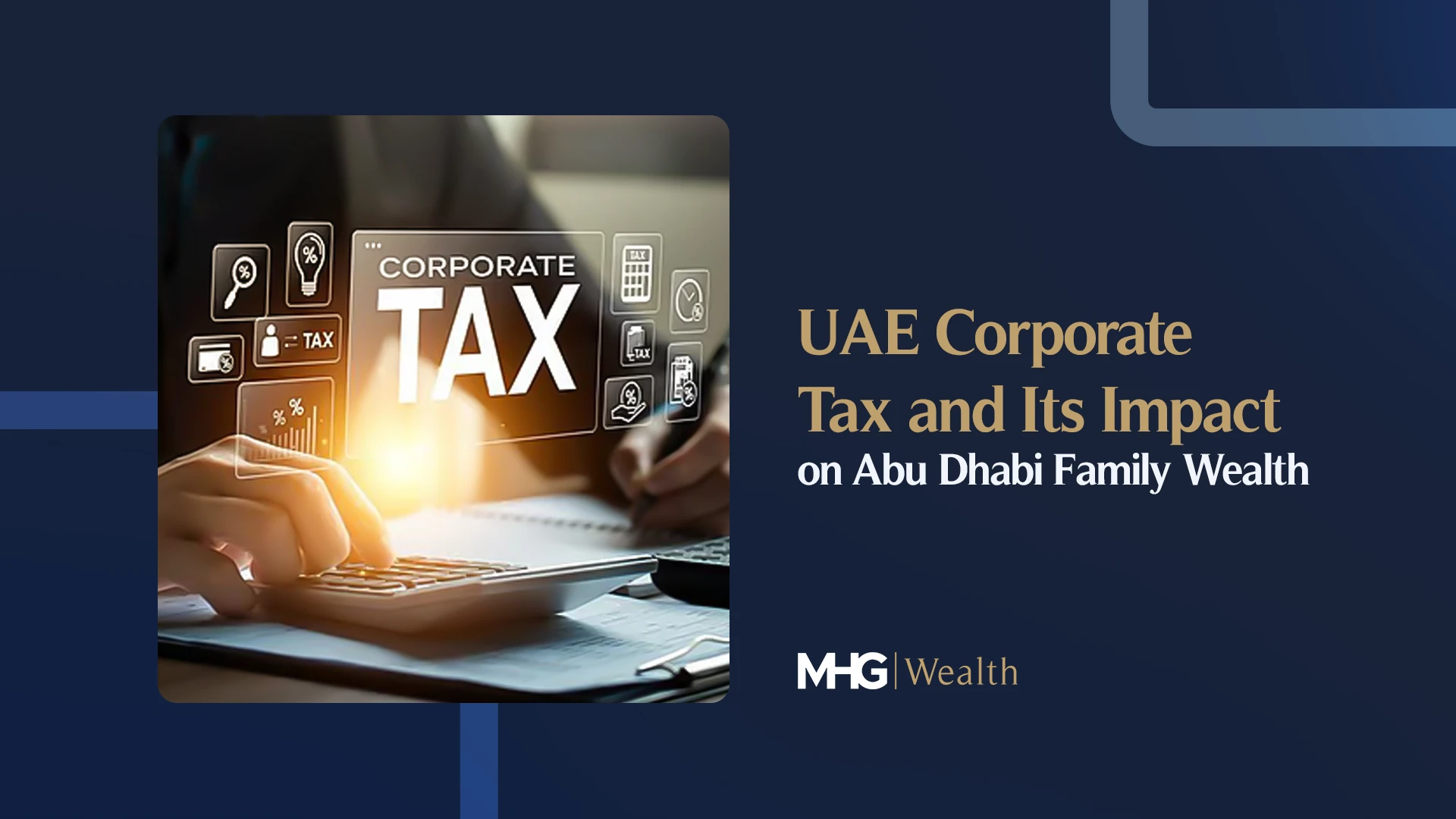If you’ve been fortunate enough to build up a sizable savings portfolio, you may be wondering whether it’s best to save or invest those funds. You should always be on the ball when it comes to money choices. This is your money that you’ve worked hard to accumulate. You don’t want the value being eaten away by inflation – especially with inflation having been high for the past few years.
The most successful savers and investors will utilise a range of cash and investment opportunities, taking advantage of tax breaks to increase their chances of growth.
So how much should you allocate to saving vs investing? The answer will differ for each individual but there are some common themes that we’ll discuss in this article.
Saving vs investing: Which to prioritise?
Cash savings are important. Everyone should aim for a healthy level of cash savings that covers day-to-day expenses as well as upcoming major purchases such as property, vehicles or holidays.
That said, most cash savings accounts do not keep up with inflation. So for long-term savings, you are best to invest money where you can. A good financial advice is all you need to understand how your money should be invested and how much should be saved for your sudden future needs. Your money is likely to work harder being invested, although it comes with more risk as returns are not guaranteed.
When investing, think about your long-term goals. Not all investing is risky. For example, you could invest money in a passive investment fund that tracks major companies across the world.
The chances of all these companies failing are extremely low. If you plan to hold the investment for the long term – perhaps over five years or more – the odds are your investment will rise. The MSCI World Index, for example – which tracks around 1,500 companies – has returned an average of 10.5% a year over the past five years.
If you have substantial savings, you may be willing to take higher levels of risk – perhaps by investing in new businesses or promising start-ups. At MHG Wealth, our investment management service helps you create the perfect investment plan and maximise the potential of your money.
With more risk comes the potential for greater rewards, although the chances of failure may also be higher. Nevertheless, experienced investors will say that they don’t expect all investments to work out. Some will succeed and others will fail, but the aim is that the ones that are successful will make up for any losses. At MHG Wealth, our investments focus on companies that are run by highly experienced teams and have strong profit margins to reduce investment risk.
UK start-ups are reaching unicorn status of a $1bn valuation at a faster rate than ever before. They’re only able to grow to this level thanks to investors taking a risk to fund them early in their journey – and investors will have done very well out of their success.
When calculating how much to allocate to saving vs investing, it depends on your risk tolerance. And, how much money you want to make or can afford to lose.
As a rule of thumb, the Financial Conduct Authority (FCA) recommends putting no more than 10% of your total net assets in high-risk investments. But others will be comfortable investing at a higher level than this as part of a diversified portfolio.
We explain more here about other alternative assets you could add to your portfolio, such as art, cryptocurrencies, real estate or venture capital.
Investing tax reliefs
Another reason why high-net-worth individuals invest is to take advantage of the many tax breaks on offer.
If you are based in the UK, the starting point is to max out your pension and other tax-free savings accounts such as ISAs. But there are limits on how much you can put into these accounts. This is when other tax-efficient investment schemes such as venture capital schemes are considered by high-net worth individuals.
It’s in everyone’s interests that a business is successful. It boosts employment and tax revenue, and generally makes a country more competitive through innovation. Governments therefore encourage investment into businesses through tax relief. They know that investors take a risk by investing in early-stage companies, so various incentives are offered.
As an added bonus, your investment may even be exempt from inheritance tax if the company you invest in qualifies for business relief. You must hold the investment for at least two years. In the UK, this is also why high-net worth investors consider investing in private companies as the inheritance tax rate is a hefty 40%.
UK investors can benefit from the below Venture Capital tax relief schemes:
- Seed Enterprise Investment Scheme (SEIS)
- Enterprise Investment Scheme (EIS)
- Venture Capital Trust (VCT)
Depending on the scheme, you can claim income tax relief against your original investment or capital gains tax relief on any gains or reinvestment. The table below shows in detail the different tax reliefs available to private investors.
Tax Relief SEIS EIS VCT Maximum Investment £200,000 £1m or £2m for knowledge-intensive companies £200,000 Income Tax Reflief 50% 30% 30% Dividend Income Taxable Taxable Tax-free Capital Gains Tax Excempt after three years of 50% relief earlier if reinvested Excempt after three years Excempt Inheritance Tax Excempt after two years Excempt after two years Liable Length of time you must hold the inestment Three years Three years Five years Loss Relief Yes Yes No
Sources: Gov.uk/SEIS, Gov.uk/venturecapitalschemes
Common Challenges in Saving and Investing
Balancing saving and investing isn’t always straightforward. Let’s address some of the most common obstacles and how to overcome them:
1. Lack of Financial Literacy
Many people struggle with understanding where to begin or how to manage their money effectively. Without basic financial knowledge, it’s easy to feel overwhelmed or make poor decisions.
Solution: Start with the basics. Use financial calculators, read blogs like ours, or consult with a financial advisor to build your confidence.
2. Failure to Build an Emergency Fund
Skipping this step often leads to financial distress. Without an emergency fund, unexpected expenses like medical bills or car repairs can force you to dip into investments prematurely.
Solution: Aim to save three to six months’ worth of essential expenses in a high-yield savings account.
3. Struggling to Keep Up With Inflation
Inflation erodes the purchasing power of your savings over time. This is especially challenging if you rely solely on low-interest savings accounts.
Solution: Invest a portion of your money in diversified assets that outpace inflation, such as mutual funds, ETFs, or real estate.
4. High-Interest Debt
Carrying high-interest debt, like credit card balances, can derail financial plans.
Solution: Before focusing on investments, prioritise paying off such debt. The interest you save will likely outweigh potential investment gains.
5. Managing Risk and Market Volatility
Investing comes with risks, such as market declines or even the loss of principal. For many, the fear of losing money prevents them from taking the plunge.
Solution: Assess your risk tolerance and diversify your portfolio to balance risk and reward. Learn more about managing risk in our article on What Is Diversification in Investing.
6.Finding Suitable Savings Options
Not all savings accounts are created equal. High-yield savings accounts and money-market funds offer better returns than standard accounts.
Solution: Take the time to research and compare options ensures your money works harder for you.
Financial Planning and Goals
Saving and investing should align with your financial goals, whether short-term (saving for a vacation) or long-term (planning for retirement).
Here’s how to structure your financial plan effectively:
1. Start With an Emergency Fund
Before you invest, ensure you have a safety net. This fund covers unexpected expenses, reducing the need to sell investments prematurely.
Example: A bank savings account or high-yield savings account is ideal for this purpose.
2. Identify Your Financial Goals
Define what you’re saving or investing for. Short-term goals (1–5 years) are better suited for savings, while long-term goals (5+ years) benefit from investment growth.
3. Take Advantage of Financial Tools
Use financial calculators to estimate how much you need to save or invest to reach your goals. This ensures your strategy remains measurable and achievable.
4. Start Early
Time is your greatest ally in building wealth. Thanks to compound interest, starting early—even with small amounts—can lead to significant growth. A high-yield savings account or a retirement account is an excellent place to begin.
5. Balance Short- and Long-Term Goals
Short-term goals, like saving for a vacation, require low-risk options such as a bank savings account or money-market fund. Long-term goals, like retirement, benefit from investments like mutual funds or ETFs, which offer higher potential returns over time.
6. Go for Financial Literacy
Improving your financial knowledge empowers you to make informed decisions. Understanding terms like risk tolerance, diversification, and inflation ensures you’re better prepared to navigate the financial landscape.
Investment Options and Products
The variety of investment products can be overwhelming, but understanding your options helps tailor your strategy:
- Types of Investment Products
- Bonds: Low-risk investments offering fixed returns, ideal for conservative investors.
- Exchange-Traded Funds (ETFs): Diversified, cost-effective options that track indices or sectors.
- Growth-Stock Mutual Funds: Higher risk but with potential for significant long-term gains.
- Real Estate Investment Trusts (REITs): Provide exposure to property markets without owning physical assets.
- Investment Accounts and Brokers
Choosing the right investment account is crucial. Independent brokers or registered plans like ISAs and retirement accounts offer tax advantages, helping your money grow more efficiently. - Role of Personal Financial Advisors
A financial advisor can provide personalised advice, helping you align investment choices with your financial goals and risk tolerance. They also assist in navigating complex products like GICs, mutual funds, or prospectuses. - Alternative Investments
For those comfortable with higher risks, options like venture capital, real estate, or alternative funds can diversify portfolios and potentially yield higher returns.
Risk Assessment
Understanding and managing risk is essential when allocating money between saving and investing:
- Comparison of Risk Levels
Saving is inherently safer, offering principal protection but lower returns. Investing, while riskier, has the potential for higher gains, especially over the long term. - Risk Tolerance
Assess your comfort level with potential losses. Tools like investment research and financial calculators can help determine your risk tolerance and guide asset allocation. - Importance of Diversification
Diversification spreads risk across asset classes, reducing the impact of poor-performing investments. A diversified portfolio balances exposure to stocks, bonds, and other investments, minimising short-term volatility. - Managing Market Volatility
Market exposure inevitably involves ups and downs. Staying focused on your long-term objectives and maintaining a diversified portfolio helps manage the emotional rollercoaster of market fluctuations.
When to Save vs. When to Invest
Knowing when to prioritise saving or investing depends on your financial circumstances and goals:
- Emergency Fund Before Investing
Always build an emergency fund before considering investments. This ensures you’re prepared for unexpected expenses without needing to liquidate assets. - Short-Term vs. Long-Term Goals
- Short-Term Goals: For goals within 1–3 years, prioritise savings in accounts with guaranteed returns, such as high-yield savings accounts or GICs.
- Long-Term Goals: For goals beyond five years, investing offers the potential for higher growth. Options like mutual funds or ETFs align with long-term horizons.
- Set Financial Goals
Your goals dictate your approach. Retirement planning, for example, benefits from investments in growth-stock mutual funds or real estate, while saving for a vacation may require a simpler strategy. - Create a Balanaced Approach
Start by saving enough to cover emergencies, then allocate surplus funds toward investments. Automating your savings and investments ensures consistent contributions to both.
Conclusion
If you are engaged with your money, you will both save and invest to protect and grow your assets as much as possible.
Cash savings are important for immediate financial security, but if you are sitting on surplus funds you should certainly consider investing. There are risks involved with investing, but you don’t need to choose investments that are high risk. A good financial advisor can help you understand all of this and also take care of your investments.
Having said that, if you have a high amount of cash and are looking to take more risk, you could consider higher-risk investments to potentially make greater returns. There are various tax reliefs you can take advantage of to reduce the financial risk to you.
We offer a wide range of investments through MHG Wealth. If you would like a private consultation to discuss potential investment opportunities, please contact us to schedule a call.






